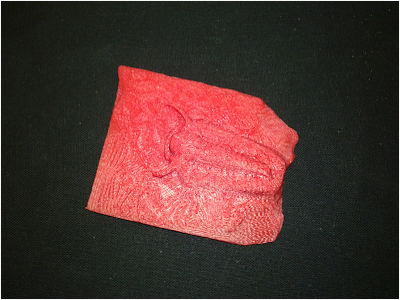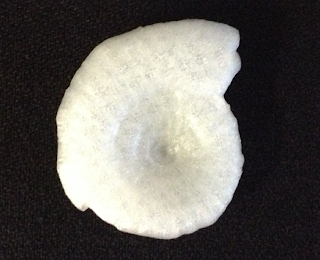A few days ago, the
overall winner of our “Hunt the 3D Fossil” Competition visited BGS in Keyworth for a VIP tour.
Eleven year old Phoebe found a 3D printed crinoid in amongst the ichthyosaurs
at the Yorkshire Museum, where she and her family are regular visitors.
 |
This is the
crinoid we 3D printed and which Phoebe spotted in the museum
The first part of the day was a
chance to see the workings of the project, and Phoebe helped to make a laser
scan of a fossil fish, and took photographs using the tilting stage which we
then turned into an anaglyph for her. Before we left for lunch, we started the
3D printer to make a trilobite, one of her favourite kinds of fossil!
 |
After lunch we began a tour of
BGS – being a large site, we had a lot to fit into quite a short space of time.
Phoebe enjoys collecting “real” fossils as well, so first we stopped off at our
records store, where she was able to see the registers which hold all the
information on our specimens, and how important it is to keep these kind of
records for any size collection.
 |
Examining
one of the registers in the records section
 |
| Part of one of the three core stores at BGS Keyworth |
This left the museum collections
to see. With a quarter of a million specimens there wasn't going to be time to
see everything, so Louise and Paul (who look after the collections) had
selected out some stunning specimens for us to look at. Phoebe liked them all,
but we particularly liked looking at:
- Dinosaur bones - unfortunately we didn't
have her favourite Parasaurolophus , as it
is a North American genus, but there were bones of Iguanodon and Megalosaurus
to be seen
- Ichthyosaur, plesiosaur and a pterosaur
specimen from Lyme Regis, as well as a shark collected by none other than Mary Anning
- Clypeus ploti, a sea urchin, or if you prefer, a
“poundstone” or “Chedworth bun”
- Calymene blumenbachii, the famous “Dudley locust” trilobite
- Many, many ammonites, including Psiloceras from the Somerset coast, still with traces of the original shell present.
To finish the day, Bruce Napier
took us on a virtual “flight” above (and below) the UK using the 3D visualisation
suite. The system is not just limited to this planet either. We also spent an
enthralling few minutes exploring the surface of Mars!
There was just time to visit the
shop, where Phoebe was able to grow her own fossil collection a little bit
more. We are glad that everyone had a fun day, and the family are already
planning more visits to fossil localities and museums in the UK!
---
Simon Harris















